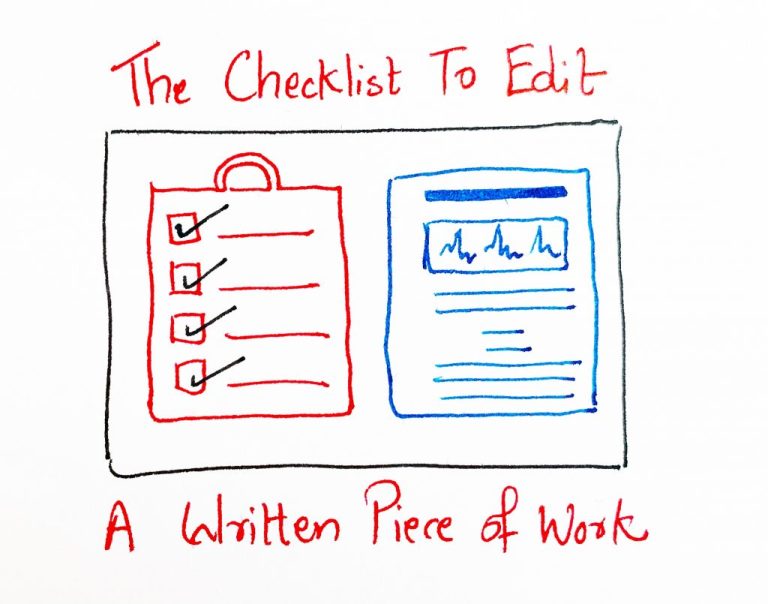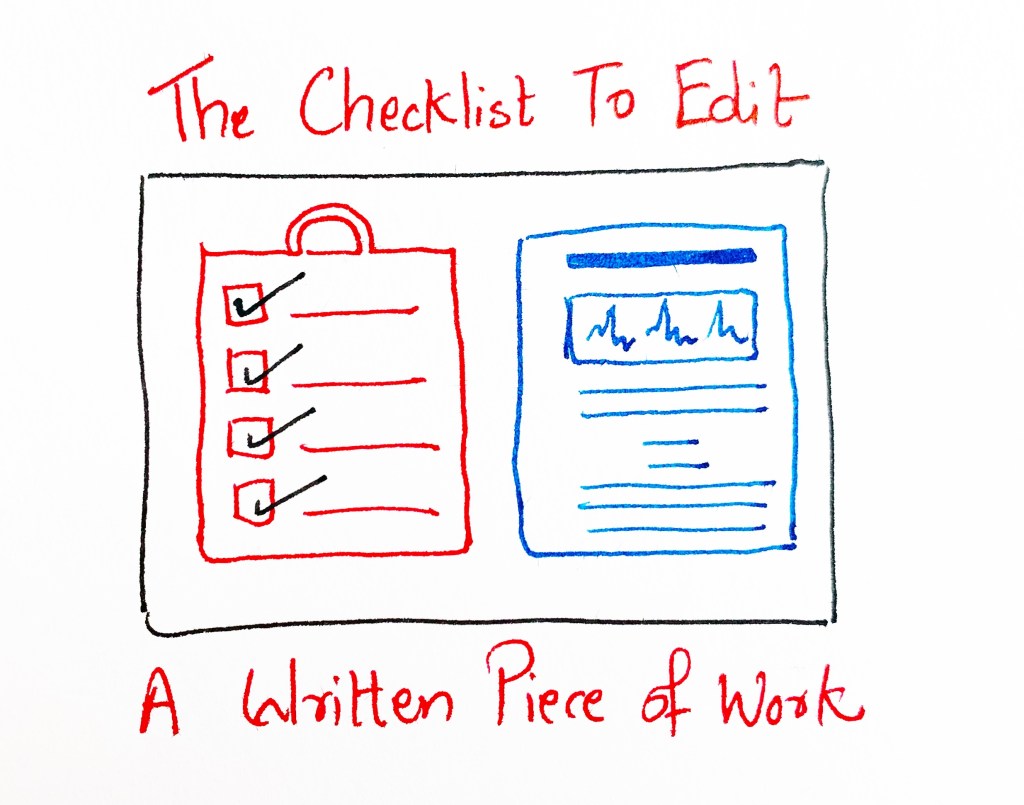The secret to editing the work is simple: you need to become its reader instead of its writer.
– Zadie Smith

The Heart Of Content
Whether you are editing material supplied by the client or by other writers, or your own copy, think like the reader. The most important consideration in an article is the reader’s persona, his current perception and the new perception that the article is going to build. You must keep in mind as to how the reader will benefit from the information provided in the article.
We’ve converted this entire blog in PDF form that you can download and save for later reading (or sharing with your friends). You can download it using the form below:
Reader’s persona
Every article should have a well-defined persona it should target or cater to. Identify the ideal audience of the article and make sure that the content caters to the reader’s persona.
The Problem
A good article always tries to solve the problem a particular reader has before it ends. Make sure that the problem is defined and emphasized right in the beginning so that the reader is aware about the content covered in the article.
Current Perception
The reader has a problem and he might be looking for a solution but this solution might or might not be something he imagined beforehand. He might be aware of a different solution that might have solved the problem (probably not in the most optimal manner possible). Or he might be having a negative/neutral outlook towards the proposed solution which might give him zero incentive to implement it. Make sure that the content is structured in a way which shows that the current perception has been figured and accordingly, the solutions are provided in the article to encourage the target persona to implement it.
Renewed Perception
Make sure that the renewed perception of your reader and the positive outlook is mentioned at the end of the article. The possible solution to the reader’s problem AND the incentive to adopt this proposed solution should be mentioned in the conclusion.
While editing a written piece of work, keep the above in mind. Use the following editing checklist and aim to:
- Achieve Maximum Clarity
- Remove Repetition | Fillers Are A No-No
- Get The Facts Right
- Avoid The Jargon
- Perfect The Spelling
- Check The Punctuation
- Make Sure That The Tone Is Conversational
- Focus On Structure
- Be Consistent While Formatting
Pro tip: If you need 30 standout SaaS growth hacks to attain double the growth for your SaaS business, fill out the form below!
Editing Checklist #1 – Achieve Maximum Clarity

- Break long sentences into two or more sentences to keep them short.
For example – Now the product that gets created based on the inventor’s idea is revolutionary and it reaches the public domain without any IP protection, which is under the threat of fast followers as the companies out there who have resources and capital are always on a look for products which they can easily copy and sell for a lower cost. (Too long – 59 words)
Change to – Now the product that gets created based on the inventor’s idea is revolutionary. And it reaches the public domain without any IP protection. It’s under the threat of fast followers. Companies out there who have resources and capital are always on a look for products which they can easily copy and sell for a lower cost. (Broken into 4 sentences – 13, 10, 7, 26 words respectively)
- Understand the topic. If the message can be potentially misinterpreted, change it.
- Use contractions as they help to make the article more reader-friendly.For example – It is possible that you might not have a budget to pursue all the inventions for IP protection.
Change to – It’s possible that you might not have a budget to pursue all the inventions for IP protection.
- Change the passive voice to active voice. Sentences written in an active voice flow better and are easier to understand, whereas sentences using a passive voice are often harder to understand.
For example – Better decisions have been taken by winners by establishing a set of tools and criteria to make the right call. (passive)
Change to – Winners take better decisions by establishing a set of tools and criteria to make the right call. (active)
Editing Checklist #2 – Be Succinct! | Fillers Are A No-No

- Eliminate all padding and be prepared to add material. Be careful of plagiarism, which is a strict no.
- Unnecessary words tend to make the article monotonous and the reader loses interest.
For example – There are lots of better, more interesting ways to start sentences.
Change to – Begin your sentences in an interesting way.
- Remove the redundant expressions.
For example – It is absolutely essential to clarify the technical terms.
Change to – It is essential to clarify the technical terms.
- Do away with the fluff, be as succinct as possible.
For example – The Triangle IP Innovation Capture Tool (“TIP Tool”) is a tool which helps the inventors with the patent mining process. It is an intuitive drag-and-drop tool to take control of your patent capture process.
Change to – The Triangle IP Innovation Capture Tool (“TIP Tool”) is an intuitive drag-and-drop tool to take control of your patent mining and capture process.
- Get rid of the adverb and replace the expression with a stronger verb or adjective, as the case maybe.
For example – The layout of the website looks very beautiful.
Change to – The layout of the website looks gorgeous.
Editing Checklist #3 – Get The Facts Right

- Make sure that the material is accurate.
- Do your own research to verify the information in the article.
- In a product review article, make sure the user is able to understand the products based on product usability.
- For informational articles, make sure the user is able to implement the advice practically.
- In case of any citations:
- Make sure that the source is legitimate.
For example – Wikipedia is not a legitimate source of information as most of the Wikipedia pages can be edited by anyone. It’s difficult to verify the correctness of the information on Wikipedia.
- Change the citation to the original source instead of the source where the original source is quoted.
For example – If there are some statistics regarding patents which have been published by WIPO and are available on another website. While using the statistics, the link to the WIPO website should be cited instead of the other website.
- Make sure the images/videos/media used are royalty free and accompanied with the source. The image/video/media should come after the content.
Editing Checklist #4 – Avoid The Jargon

- If the jargon is necessary, add a description of the technical terms for a layman’s comprehension.
For example – If your audience is not from a technical background, then explain words such as Patent – It is an exclusive right granted for an invention.
- In case of any abbreviations, add the full form at the first instance.
For example – WIPO (World Intellectual Property Organization) provides IP (Intellectual Property) services that encourage individuals and businesses to innovate.
- Replace the complex word with the simple ones, where possible.
For example – Before filing a patent, a prior art search is necessary.
Change to – Before filing a patent, finding out if your invention is novel is necessary.
Editing Checklist #5 – Perfect The Spelling

- Use the spell checker as back-up but don’t solely rely on it.
- Be sure of using the same accent throughout the article i.e. either UK English or US English depending on your audience.
For example – UK English – Organisation or Favour
US English – Organization or Favor
- Be careful with the usage of the homophones.
For example – This is a checklist for editing a written peace of work. (peace is wrong in the context)
Correction – This is a checklist for editing a written piece of work.
Editing Checklist #6 – Check The Punctuation

- Unnecessary punctuation can kill the flow of the entire article. Use the punctuation only where necessary and helps give clarity to the readers.
- In case of too many commas in a sentence, add a full stop and make it short. (See the first example under #1.)
- Just keep it simple and be careful with the colons, apostrophes, quotation marks, and commas.
For example – when used as a descriptor, the word ‘which’ takes a comma. But the word ‘that’ doesn’t.
- Use tools like grammarly, which is a digital writing assistance tool.
Editing Checklist #7 – Make Sure That The Tone Is Conversational

- Conversations are more enjoyable than lectures. While editing make sure that the tone is conversational with the target persona.
- Make sure that the tone and flow of the article is relatable for the target persona.
- Change the negative sentences to the positive ones.
For example – Do not use complex words.
Change to – Avoid using complex words.
- Change the strong negative words in the article.
For example – A complex invention disclosure form is every inventor’s nightmare.
Change to – Inventors don’t like to fill complex invention disclosure forms.
Editing Checklist #8 – Focus On Structure:

- The article should have a proper structure. Make sure the intent for the topic of the target audience is described at the beginning.
- In most cases, where possible, follow the structure – Introduction with context setting -> Problem -> Solution -> Conclusion with a Call to Action (CTA).
For example – In an article titled ‘Protect Your IP Before Your Co-Founder Leaves Your Startup’, you start by giving context as to how a co-founder is also an employee privy to confidential information. The problem part will include the consequences of a co-founder leaving the startup and how they can take the IP with them. The solution part will provide tips like assigning the IP to the company rather than co-founders, employment agreements, NDAs etc. Finally the conclusion will summarise and help understand the reader how the simple solutions can help them avoid any complicated situations when their co-founder leaves the startup.
- There should be a proper flow and the article should not go back and forth on the information it is providing. Make sure that the content relating to a particular sub-heading is all under it instead of the content being scattered under various sub-headings.
- Keep your paragraphs short.
- Modify the sub-headings if they do not clearly give the gist of the content.
Editing Checklist #9 – Be Consistent While Formatting:

- The formatting should be consistent throughout the article.
- Capitalise each word for the headings and subheadings.
For example – Be consistent with formatting.
Change to – Be Consistent With Formatting.
- Check the alignment of the text. Keep it left aligned for headings and justified for the main text.
- Follow the style guide and ensure that the same font is used throughout the article.
- In a listicle, make sure the bullets and/or the numbering format is consistent.
- Make sure that the main title is formatted as heading 1, main headings are formatted as heading 2, subheadings as heading 3 and the rest of the article as normal text.
- Check the line spacing and paragraph spacing.
Pro Tip: If you are editing your own work, get some time away from the article before you start editing.
Hope this checklist will be really handy in your editing process to curate effective content!
Do you want to revisit your content strategy based on how Marcus did it?
If you wish to read more goodness, subscribe to our newsletter.
We send value to your inbox only once in 15 days.
Meanwhile, Explore the plethora of resources to help you out your business! If your organisation wants its content marketing strategy designed by Concurate, let’s connect over a short call. Block our calendar today!







